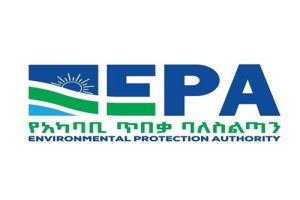
Integrated transportation systems (ITS) necessitate better technology that contributes to environmental protection and greenhouse gas emission reductions. The combination of greener and smarter transportation technology promotes sustainable practices and innovative technologies that reduce environmental impact and improve efficiency.
Countries are currently working on a green transportation system, regardless of their economic capability, degree of industry, or development. They advocate for greener transportation, notably the use of electric vehicles (EVs) and hybrid cars to reduce reliance on fossil fuels and lower greenhouse gas emissions.
They also invest in mass and public transportation services, such as efficient public transit systems (buses, trams, and subways) to limit the number of individual cars on the road, hence reducing traffic congestion and pollution. Furthermore, countries around the world are encouraging walking, cycling, and other non-motorized modes of transportation through the construction of bike lanes, pedestrian-friendly infrastructure, and safe pathways.
Another type of green transportation system is the use of alternative fuels to power vehicles and reduce carbon footprints, such as biofuels, hydrogen, and other renewable energy sources.
More importantly, states around the world are working on sustainable urban development. Designing cities to reduce travel distances and promote mixed-use projects, making it easier for people to get to services without having to drive. Furthermore, they encourage carpooling and ridesharing to increase vehicle occupancy and reduce the number of cars on the road.
Countries around the world are attempting to combine green mobility with smarter transportation in addition to supporting green transportation systems within their own borders. Intelligent Transportation Systems (ITS) are what they use. Employing technologies such as adaptive traffic signals, smart parking systems, and real-time traffic monitoring to enhance traffic management.
They also create smart transportation infrastructure. Investing in infrastructure that uses technology to improve energy efficiency, such as solar-powered streetlights or smart traffic signals that respond to real-time conditions.
Hence, integrating greener and smarter transportation systems provides advantages. Its environmental impact is really crucial. It minimized greenhouse gas emissions, increased air quality, and decreased energy usage. It is also economically efficient since it lowers transportation expenses for individuals and businesses, reduces congestion, which saves time, and increases economic production.
Additionally, smart and green technology improves mobility, which benefits the nation. Because it made transportation options more accessible to all groups, even those who might not possess a car. Furthermore, through improved vehicle communication and traffic management, cutting-edge technologies can result in safer roads and fewer collisions.
Taking the aforementioned and other nations’ attempts to combine greener and smarter transportation systems into account, it is vital to examine what Ethiopia is doing to employ technology to increase road system usage and combat climate change.
In fact, Ethiopia is accelerating its aim to become a pioneer in sustainable and digital mobility, with the Ethiopian Ministry of Transport and Logistics ( MoTL) stepping up efforts to improve the country’s transportation system and increase the usage of electric vehicles.
According to the Ethiopian Ministry of Transport and Logistics (MoTL) State Minister Bareo Hassen, the country is experiencing a revolution in its transportation and logistics sector. Over the last seven years, significant advances have been made in railway systems, land transport, and public transportation. Nonetheless, as Ethiopia’s population and economy expand, there is an increasing desire for smarter, more efficient mobility solutions.
To meet this need, the ministry is prioritizing a full digital transformation of the sector. This includes upgrading corridor management systems, introducing online ticketing for public transport, and strengthening driver training programs tailored for both local and international standards. Ethiopia’s efforts are paying off, with its global ranking in multimodal logistics climbing from 130th to 69th place.
The government is also building stronger partnerships with neighboring countries and international agencies. Enhanced bilateral agreements, particularly with Customs and Border Authorities, are helping streamline trade routes and improve logistics performance.
Electric mobility stands at the heart of Ethiopia’s green vision. Thousands of electric vehicles are already operating in the country, and the MoTL is actively expanding the necessary charging infrastructure. Charging stations are being introduced in cities such as Dire Dawa, Harar, Bahir Dar, Debre Birhan, Gondar, and Jigjiga, with plans to extend to Hawassa and Semera.
Bareo emphasized that the government is committed to closing infrastructure gaps to support the growing demand for electric vehicles. At the same time, the ministry is encouraging private sector participation, supported by forward-thinking policies that make it easier to invest in clean transport solutions.
The E-Vehicle Adoption Strategy introduced by the MoTL focuses on environmental sustainability, with clear plans for safe battery disposal, long-term maintenance, and the development of local expertise. Centers of excellence for charging station manufacturing, research, and capacity building are also part of the roadmap.
Over the past four years, seven new institutes have joined the country’s multimodal logistics framework, with more expected to follow. This growth reflects Ethiopia’s commitment to modernizing the sector while fostering innovation and sustainability.
From training professionals in railway and aviation to building the foundation for a cleaner transport future, Ethiopia is not just catching up with global trends—it is working to lead them. The journey toward a digitized, eco-friendly, and efficient transport network is well underway, promising a more connected and competitive Ethiopia in the years to come.
In general, Ethiopia’s efforts to combine greener and smarter transportation systems are part of a larger strategy to promote sustainable development and reduce environmental impact. The country has made major expenditures in public transportation infrastructure, including expanding electric rail systems, improving road networks, and promoting non-motorized modes of transportation like cycling and walking.
These activities highlight Ethiopia’s commitment to combating climate change while boosting civilian mobility. Ethiopia seeks to create a more sustainable future by investing in greener and smarter transportation networks that promote economic growth and improve the quality of life for its citizens.
Therefore, stakeholders, greenery advocates, academics, and others should support Ethiopia’s greenery efforts to ensure green transportation that is environmentally friendly. Greener and smarter transport refers to a comprehensive strategy for developing a more sustainable and efficient transportation system that benefits both the environment and society.
BY EPHREM ANDARAGCHEW
THE ETHIOPIAN HERALD WEDNESDAY 16 APRIL 2025




